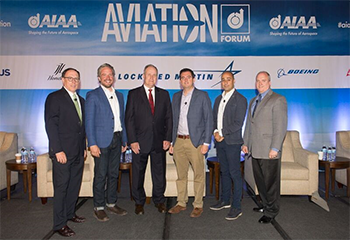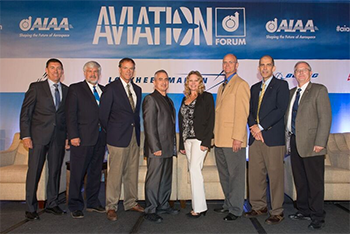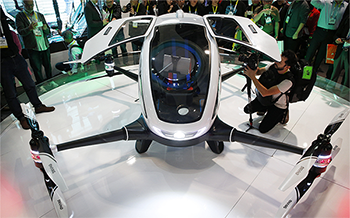Speaker: David Mindell, founder and CEO, Humatics Corp., and professor, Massachusetts Institute of Technology
by Duane Hyland, AIAA Communications (2008-2017)
As autonomous systems become more numerous, humanity will have to find ways to integrate them, but according to David Mindell, founder and CEO of Massachusetts-based Humatics Corp. and professor at the Massachusetts Institute of Technology, that won’t be as difficult as it sounds.
Mindell told the audience of the “Beyond the Robots: Toward Situation Autonomy” session at the 2017 AIAA AVIATION Forum in Denver on June 7 that the intersection of digitized machines working with humans goes back to the Apollo era.
Computerized, semi-autonomous systems made the lunar landing possible, Mindell said, pointing out there were some changes to original designs. Originally, he said, the first user interface on Apollo “would have two buttons, one saying ‘go to the moon’ and the other saying ‘take me home.’” As things turned out, it was a bit more complex. The Apollo capsule was full of digital equipment, making the lander what Mindell called “the first digital fly-by-wire system and the grandfather of today’s everyday fly-by-wire systems.”
Researchers have been continuously developing autonomous systems, but Mindell said “systems in extreme environments — air, sea, space — become valuable when they are situated within human systems of operations and use.” He said the value of autonomous systems only truly comes about “when they do something for people, whether it’s package delivery or delivering medical supplies. It’s the place where there’s a relationship with a human individuals or a system of humans.”
However, Mindell said, humans are as valuable to machines as they are to us because we give them purpose as they benefit us.
“People, robots and infrastructure: We have to think about the relationship between these three things and how we engineer the relationships between the three,” he said, explaining that by thinking about the relationships, our ideas of autonomy will continue to evolve and bring about more complex relationships.
Amazon fulfillment centers — where robots work closely with humans — are a good indicator of what our cities will look like over the next 10 years, Mindell said. He added that Humatics is working to make human-robotic interactions safer by measuring range of motion, which will soon be able to “measure location down to a millimeter, down from the 30 centimeters that most systems today can achieve.”
Humans will always need to think about humanity’s relationship with robots, Mindell said.
“I worry a lot about being killed by a poorly designed robot than an evil robot, and that problem worries all of you a great deal, worries me a great deal,” he said. “We must be very cognizant of how we build our human intentions, biases and inputs into the most intelligent systems, and we are learning about data bias and how it’s collected and it’s so dependent on data, etc. And I think of all of these autonomous systems as extensions of human systems. I worry more about the relationships of people getting built in than I do about robots taking over the world.”



